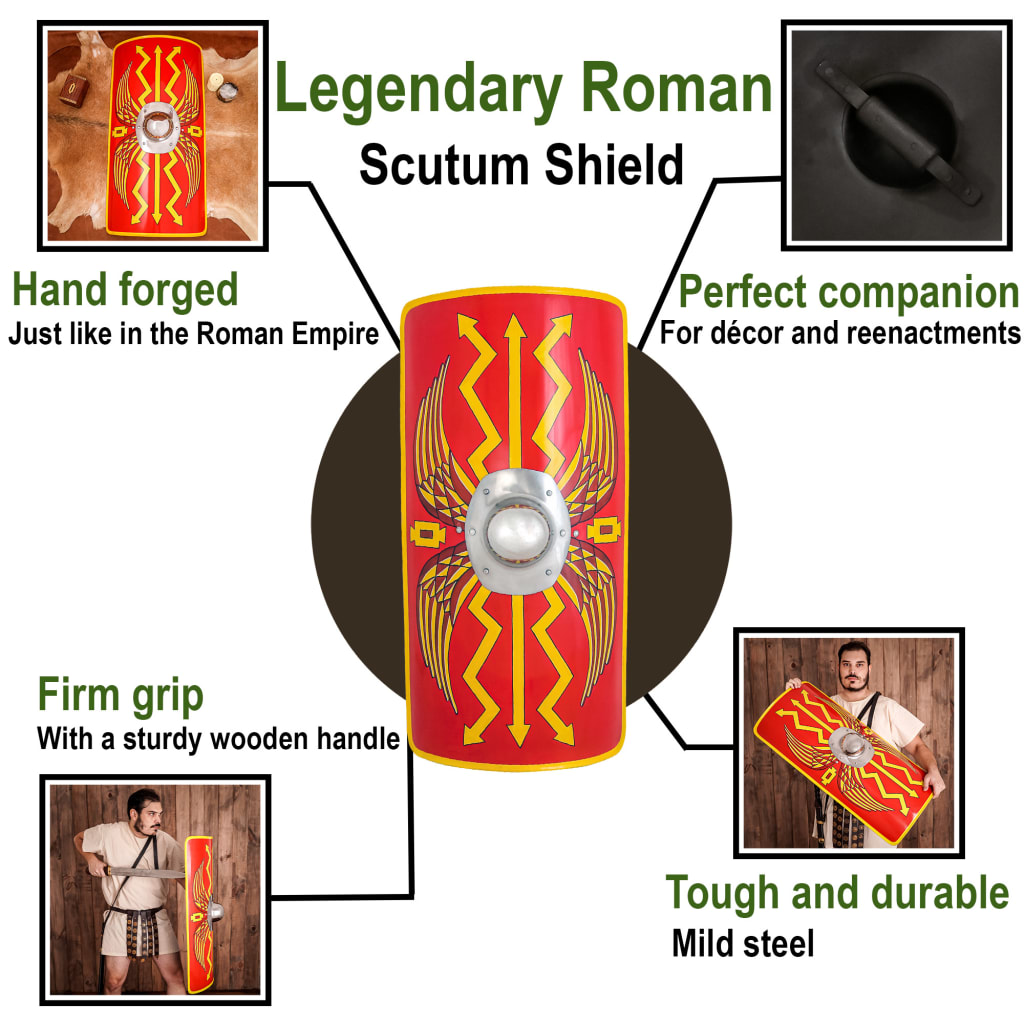Why were Roman shields CURVED?
Roman Scutum (Shield): An advanced design in military defense, providing protection and maneuverability to Roman soldiers.

The curved Roman shield, known as the scutum, was a vital component of Roman military equipment and played a significant role in the effectiveness and success of Roman legions. Its design and construction reflect the Romans' advanced understanding of military tactics, engineering, and ergonomics. The curvature of the scutum was not merely an aesthetic choice but a practical innovation that provided multiple tactical advantages.
Historical Context and Design
The Roman scutum evolved over centuries, with its distinctive rectangular, curved shape becoming prominent during the mid-Republican period and continuing through the Imperial era. Typically measuring about 105 cm in height and 65 cm in width, the scutum was made from layers of wood glued together, covered with leather, and reinforced with metal edges and a central metal boss (umbo).
Defensive Advantages
The curvature of the Roman shield offered several significant defensive benefits:
1. Deflection of Attacks: The curved surface was highly effective at deflecting incoming blows from weapons such as swords, spears, and arrows. Instead of absorbing the full impact directly, the curved shield caused attacks to glance off, reducing the force transmitted to the soldier holding it. This deflection not only minimized injury but also preserved the integrity of the shield for longer periods.
2. Protection of the Body: The curvature allowed the shield to wrap around the soldier's body, providing better coverage and protection from multiple angles. This design was particularly useful in close combat, where threats could come from the front, sides, and even above. The scutum's shape protected vital areas more effectively than a flat shield would.
3. Formation Tactics: Roman legions were renowned for their disciplined formations, such as the testudo (tortoise) formation. In this formation, soldiers would align their shields to form a protective barrier against projectiles. The curved edges of the scutum interlocked more efficiently, creating a tighter and more impenetrable shield wall. This cohesiveness was crucial for withstanding enemy volleys of arrows and other missiles.
Offensive Capabilities
The scutum was not only a defensive tool but also had offensive applications:
1. Shield Bashing: The central boss (umbo) of the scutum was a metal protrusion that could be used offensively. Soldiers could deliver powerful shield bashes to disorient and knock back enemies. The curved design allowed for a stronger, more controlled impact during these maneuvers.
2. Pushing and Shoving: In the heat of battle, Roman soldiers often used their shields to push and shove opponents, creating openings for attack. The curvature provided a better grip and leverage, enabling soldiers to exert more force when pushing against enemy lines.
Ergonomic Considerations
The design of the scutum took into account the comfort and maneuverability of the soldier:
1. Weight Distribution: The curved shape helped distribute the weight of the shield more evenly across the arm and body, reducing fatigue during prolonged engagements. This allowed soldiers to maintain their defensive posture for longer periods without excessive strain.
2. Ease of Movement: The curvature facilitated better movement and agility in combat. Soldiers could maneuver the shield more fluidly, adapting quickly to changing battle conditions. This was particularly important in the dynamic and chaotic environment of ancient warfare.
Psychological Impact
The imposing presence of the scutum also had a psychological effect on both Roman soldiers and their adversaries:
1. Morale Boost: For Roman soldiers, the scutum was a symbol of their training, discipline, and technological superiority. Carrying such an advanced piece of equipment instilled confidence and a sense of invincibility.
2. Intimidation: For enemies, the sight of a wall of curved scuta, especially in tight formations, was intimidating. It showcased the Romans' organizational skills and military might, often demoralizing opponents before the actual engagement.
Conclusion
The curvature of Roman shields, or scuta, was a meticulously engineered feature that provided numerous tactical advantages on the battlefield. From deflecting attacks and enhancing protection to enabling offensive tactics and ergonomic benefits, the curved design was a key factor in the effectiveness of Roman legions. This innovation reflects the Romans' sophisticated approach to military technology and their ability to integrate practical solutions into their warfare strategies, contributing significantly to their dominance in the ancient world.
About the Creator
Marveline Merab
“History never repeats itself. Man always does.”
― Voltaire
Enjoyed the story? Support the Creator.
Subscribe for free to receive all their stories in your feed. You could also pledge your support or give them a one-off tip, letting them know you appreciate their work.






Comments
There are no comments for this story
Be the first to respond and start the conversation.